Day Trip from Sofia to Rila Monastery, a UNESCO Site
If there’s one must-do tour I recommend in Bulgaria, it’s a day trip from Sofia to Rila Monastery.
The UNESCO World Heritage site is the top landmark outside the capital Sofia and the largest religious site in the country.
In this article, I’ll show you every possible way to travel from Sofia to Rila Monastery. I’ll share my insider tips for visiting the stunning unvanquished fortress of faith. And I’ll give you my best recommendations for things to do and where to eat near the monastery.
As a proud Bulgarian and a frequent visitor to Rila Monastery, I’ll be happy to be your virtual guide.
Let’s explore!
Disclaimer: This post contains affiliate links. If you purchase something through one of them, I may receive a small commission at no extra cost to you. Thank you for helping me create free content on this website!
How to Get to Rila Monastery from Sofia
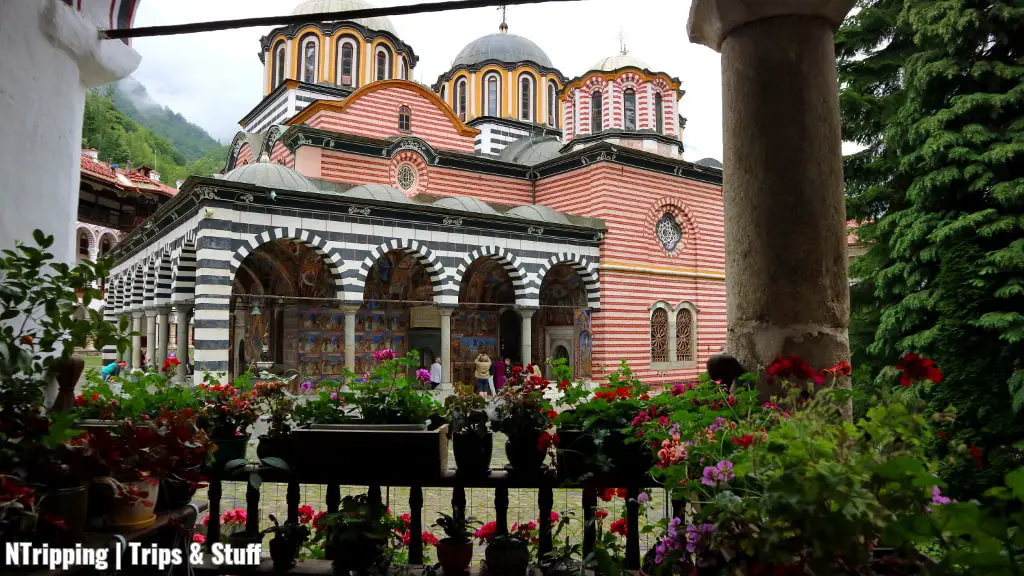
In the table below, you’ll find all available transportation options for traveling between Sofia and Rila Monastery on a day trip.
| Mode of Transport | Trip Duration | Book Online |
| Tour | Approximately 8 hours | Get Your Guide |
| Car | Around 1 hour 45 minutes (in each direction) | Discover Cars |
| Bus | Around 3 hours (in each direction), no direct bus | N/A |
| Train | N/A | N/A |
By Tour: The Most Convenient Way to Visit Rila Monastery
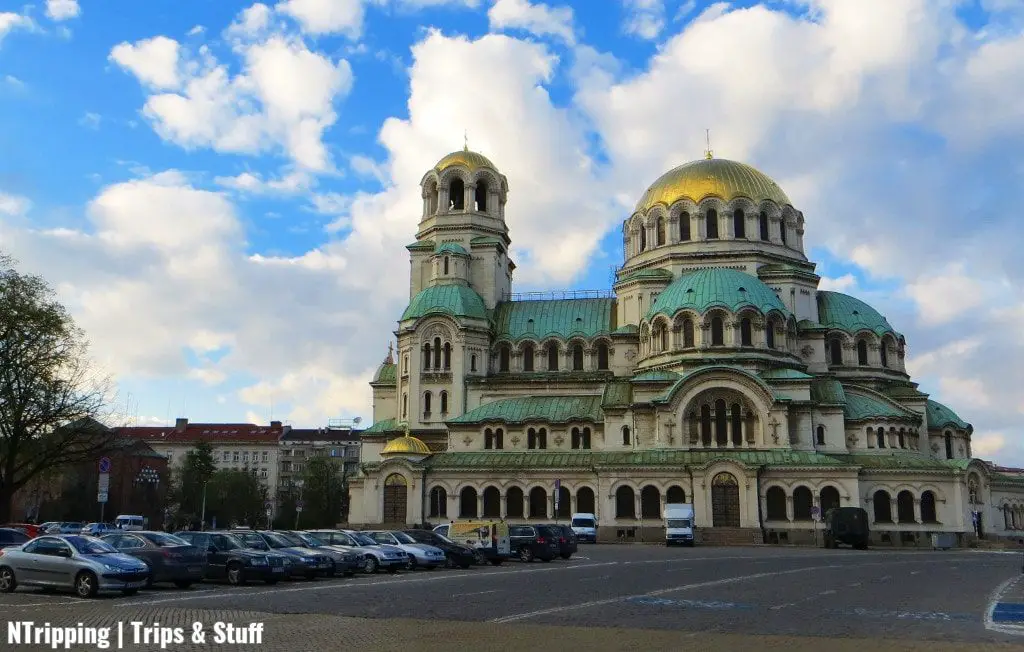
The easiest way to travel from Sofia to Rila Monastery is by booking an organized tour.
Here are the details about my recommended small-group tour to Bulgaria’s most famous landmark:
- The meeting point is the Alexander Nevsky Cathedral in Sofia at 9:00 AM.
- The travel time to Rila Monastery is about 2 hours.
- When you arrive, you’ll have between 2 and 4 hours to explore the monastery.
- On the way back to Sofia, you’ll stop to visit another UNESCO World Heritage Site, the incredible 10th-century Boyana Church.
- The tour ends around 5:00 PM at Alexander Nevsky Cathedral.
By Car: The Fastest Way to Travel from Sofia to Rila Monastery
Getting from Sofia to Rila Monastery by car is the fastest and most convenient mode of transportation.
From Sofia, head on highway E79 southward. After about 72 km / 45 mi, take the exit to Rila Monastery. A large brown sign clearly marks it.
The road from there will take you through cute villages, with the majestic Rila Mountain as the backdrop.
✔️ Tip: Be careful as the road is winding. It can become dangerous after heavy rains or snowfall. I’ve seen more than one landslide destroy portions of the road completely!
The travel time from the center of Sofia to Rila Monastery is about 1:45 hours.
By Bus: The Most Budget-Friendly Way to Go to Rila Monastery
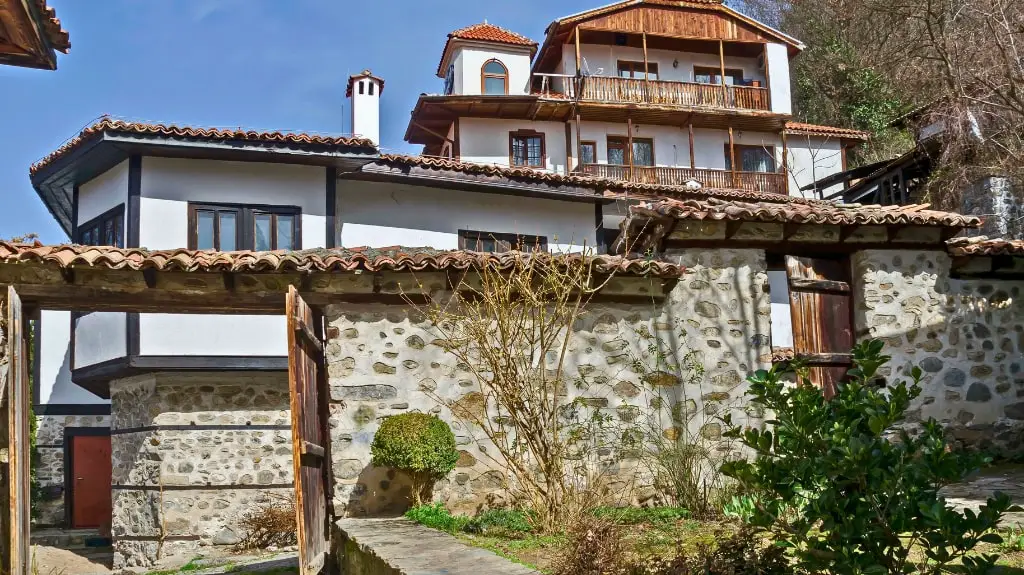
There’s no direct bus from Sofia to Rila Monastery. The best route is through Blagoevgrad, where you can switch buses to the monastery.
I only recommend going to Rila Monastery by bus if you have time and you’re trying to keep your budget as low as possible.
✔️ Tip: If you choose this option, I recommend booking a night in Blagoevgrad and exploring the gorgeous city.
Here are the necessary details for the bus to Blagoevgrad:
- The buses depart from the Sofia Central Station.
- The bus from Sofia to Blagoevgrad takes between 1:45 and 2:10 hours.
- Tickets start at 5.11 BGN ($2.60 / €2.61).
- Buses run every 30 to 60 minutes, every day of the week.
- The first bus from Sofia is at 6:40 AM. The last one leaves at 7:00 PM.
- The return tickets from Blagoevgrad to Sofia cost from 12.00 BGN ($6.12 / €6.15).
- The buses from Blagoevgrad run about 10-11 times every day of the week.
- The first bus leaves Blagoevgrad at 6:30 AM. The last one is at 7:10 PM.
- You can buy your tickets from this website.
And here’s what you should know about the bus from Blagoevgrad to Rila Monastery:
- The tickets from Blagoevgrad to Rila Monastery cost 3.00 BGN ($1.53 / €1.53) per leg.
- On the way to the monastery, you’ll need to change buses in the town of Rila.
- The return bus goes directly from the monastery to Blagoevgrad.
Rila Monastery’s History
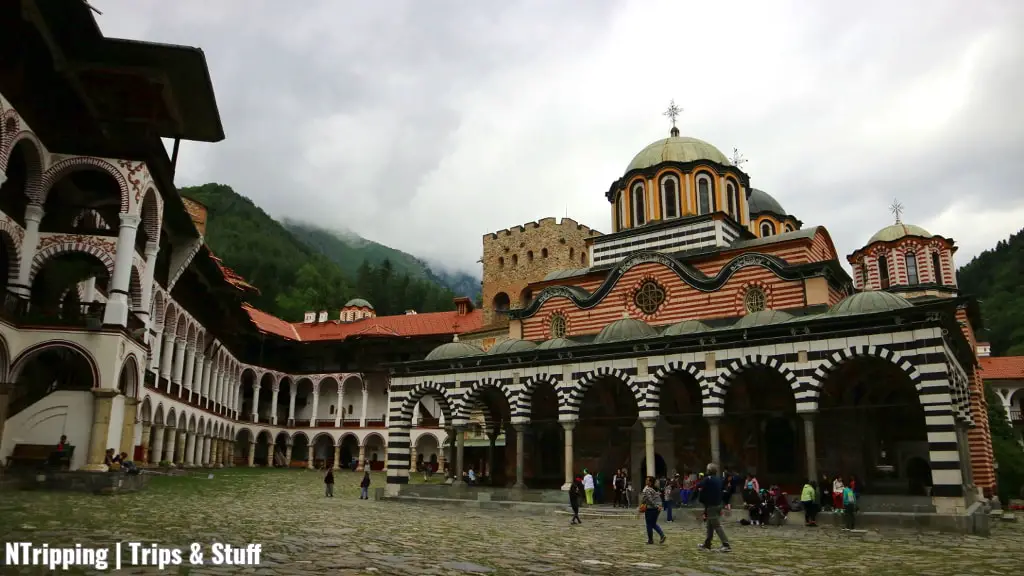
With the practicalities out of the way, let’s dig into the exciting stuff.
Standing in the courtyard of the Rila Monastery, looking at the impressive church, the defensive tower, and the black and white striped arcades, you feel like you have entered a temple.
Not just a religious temple but a sanctuary of culture, education, and history.
Rila Monastery, nestled in the powerful hug of the highest mountains in the Balkans, has been an important cultural and educational center over the centuries. It is considered Bulgaria’s holiest place.
Today, the UNESCO World Heritage site is the highlight of every traveler’s visit to Bulgaria.
Who Is Ivan Rilski, the Humble Man Who Inspired Countless Followers
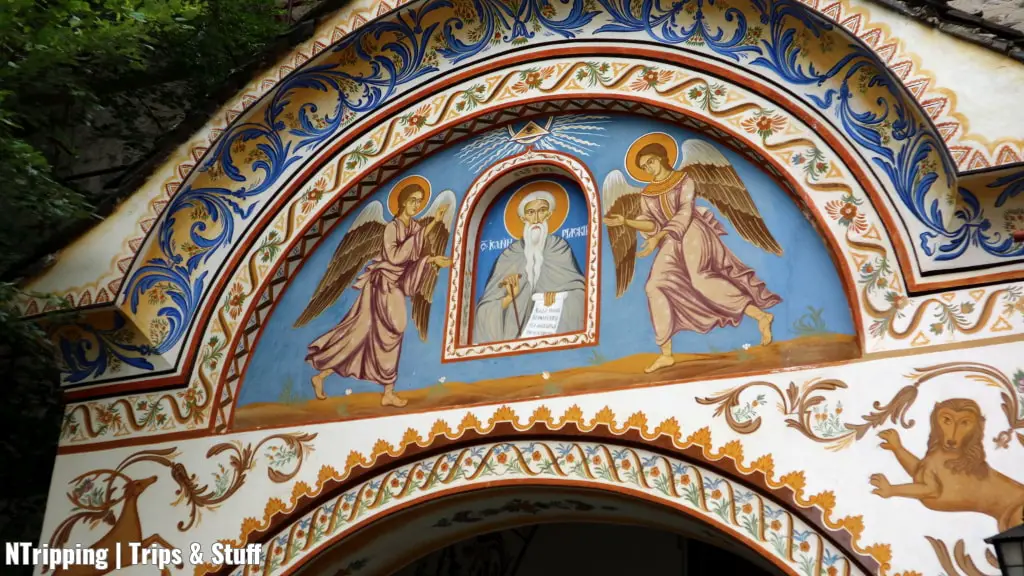
In the 10th century, a hermit monk by the name of Ivan settled down in a cave in the hills of Rila Mountain. The staggering crags and century-old trees in the highest Bulgarian mountain provided shelter for him and his faith.
Disgusted by the political situation in medieval Bulgaria, as well as the corruption of the church, he sought a place to practice his religion and devote himself to his beliefs.
He soon became known in the region for his wisdom. People came from near and far to experience his insights first-hand.
After his death, in the middle of a dense forest at 1,147 m / 3,763 ft. above sea level, his students founded the first Rila Monastery. The spot is approximately 4 km / 2.5 mi away from the monastery’s current location.
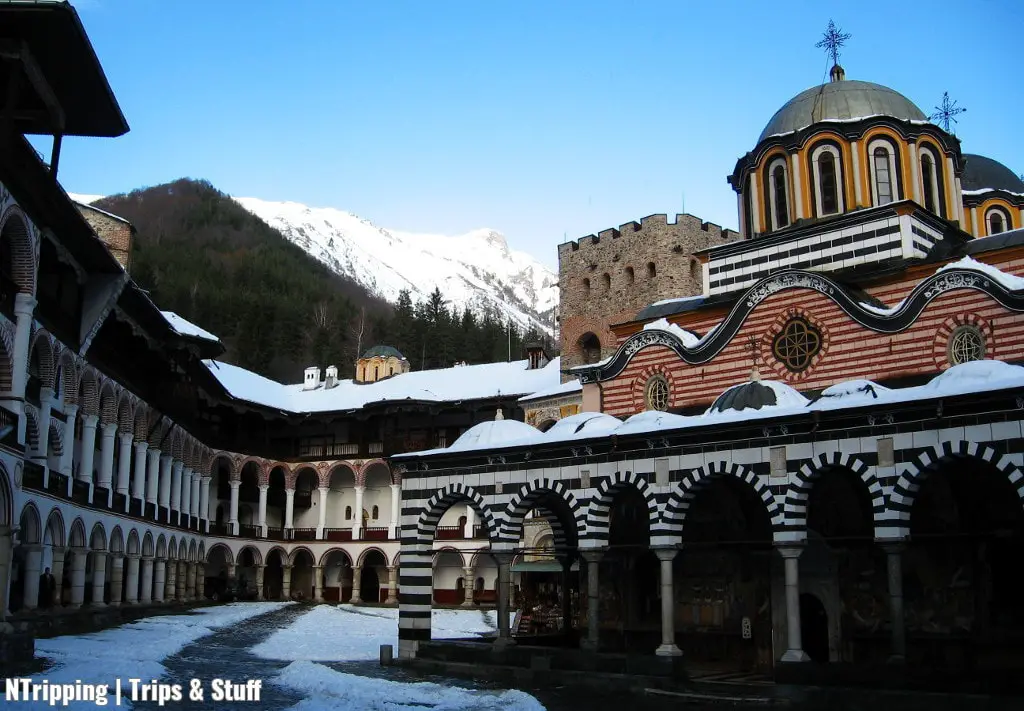
Throughout the years, the building was destroyed twice and robbed many times. Finally, in the 14th century, it was established at its present location.
To understand why the holy man chose this exact spot to devote himself to his religion, you need to imagine the surrounding area.
Rila Mountain is the highest in Bulgaria and in the Balkans. Its tallest peak – Musala – rises 2,925 m / 9,596 ft. high.
Alpine lakes with crystal clear, refreshing waters further astonish and fascinate the traveler. The most famous of them, the Seven Rila Lakes, are only a couple hours away from the Rila Monastery.
So you see, St. Ivan Rilski didn’t choose this place by chance. People say that the mountain’s energy is extremely strong in this area.
Even today, with all the modern life’s distractions around you, you can still feel how special this place is the moment you walk through its gates.
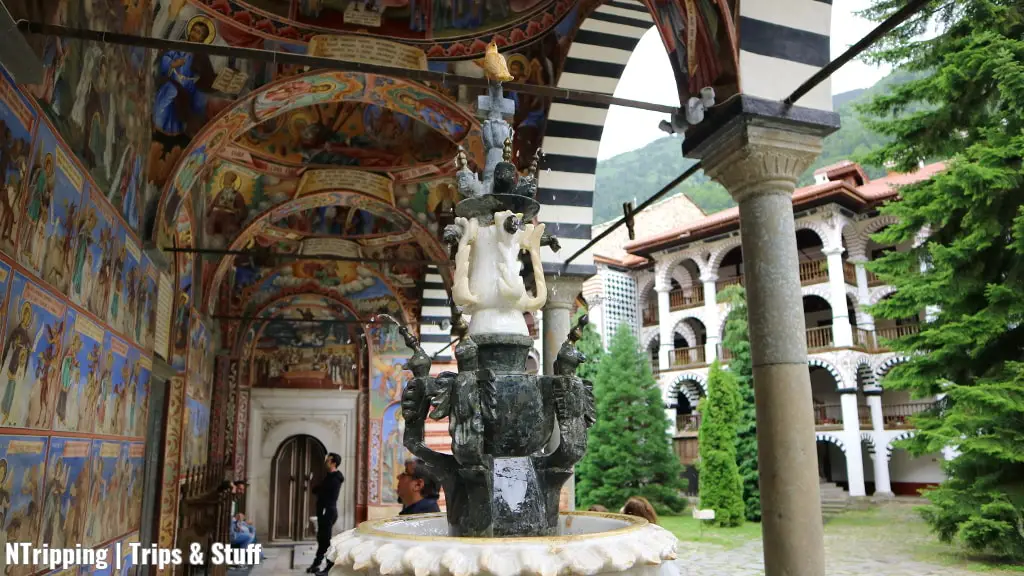
During the National Revival Period, aka the Bulgarian Renaissance, Rila Monastery’s role in the cultural and spiritual education of the nation grew substantially.
In fact, it transcended into the biggest educational and cultural center of the Bulgarian lands. Some of the most prominent educators received their knowledge here and dedicated their lives to spreading their wisdom.
The monastery’s library opened its gates to pilgrims. The number of monastery visitors grew rapidly and so did the number of newly erected buildings. The whole area transformed into a huge monastery complex. It was able to accommodate all who sought enlightenment in the holiest place in Bulgaria.
During the Ottoman rule, sultans issued official decrees, which allowed the Eastern Orthodox monastery to function undisturbed.
What to See and Do in Rila Monastery
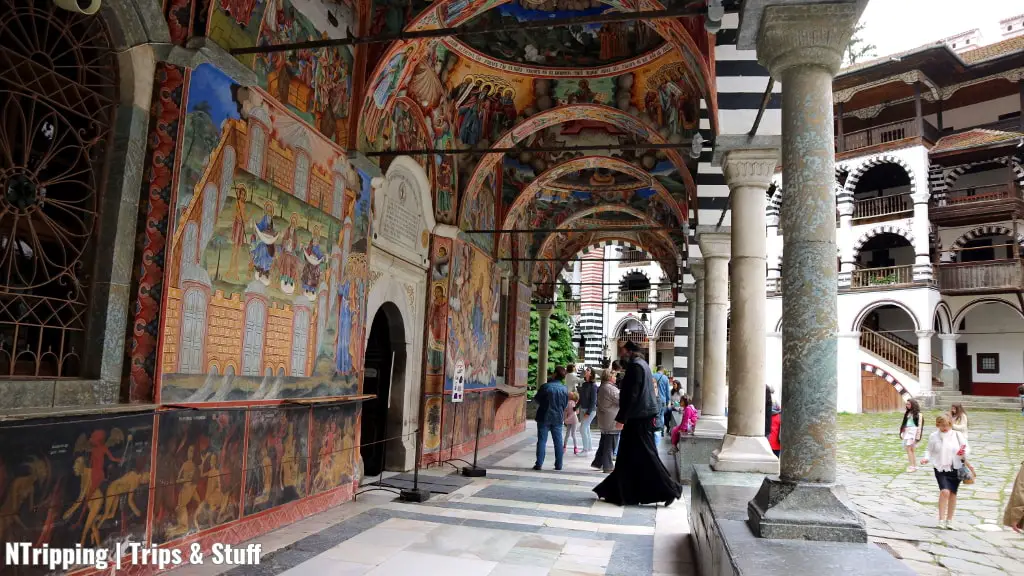
Nowadays, you can visit the fortress-like monastery and most of its buildings.
You don’t need to pay an entrance fee to enter the Rila Monastery’s courtyard and to explore the church.
However, if you want to visit the tower, the museum, the icon gallery, the kitchen, or the guestrooms, you need to buy tickets (check the ticket prices below).
Let’s see what you can do on a day trip from Sofia to Rila Monastery:
1. Explore the Masterpiece Nativity of the Virgin Mary Church
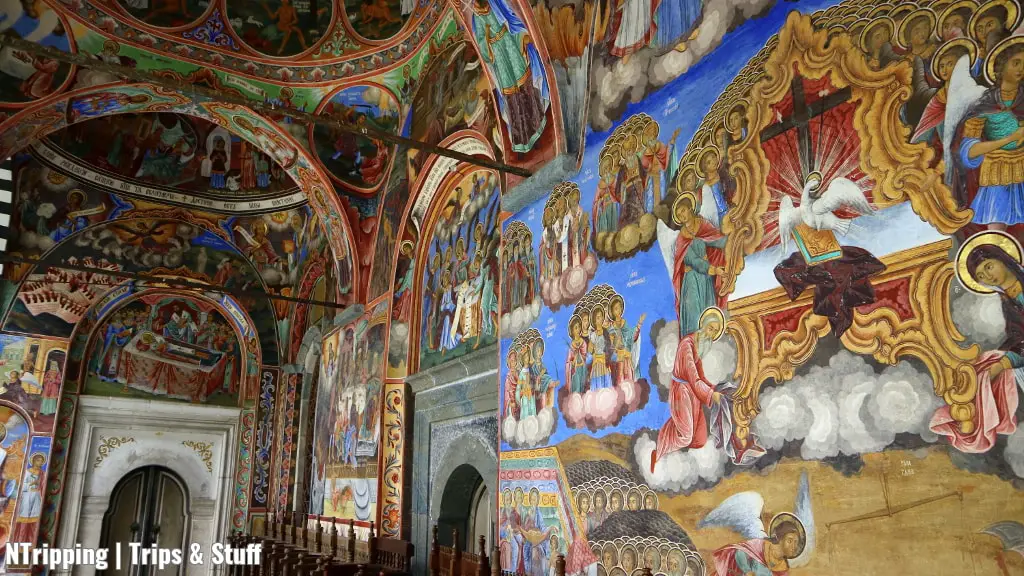
The construction of the imposing church in the middle of the Rila Monastery’s courtyard began in 1835.
At this time, Bulgaria was a part of the Ottoman Empire. The monastery played a crucial role in keeping Christianity alive and sparkling the upcoming struggles for liberation.
That’s why the most renowned master builders of the century arrived to construct the church building. Master Pavel who had previously worked on the legendary Mount Athos was the main builder. He used his skills and his knowledge to incorporate medieval elements and baroque spatial principles.
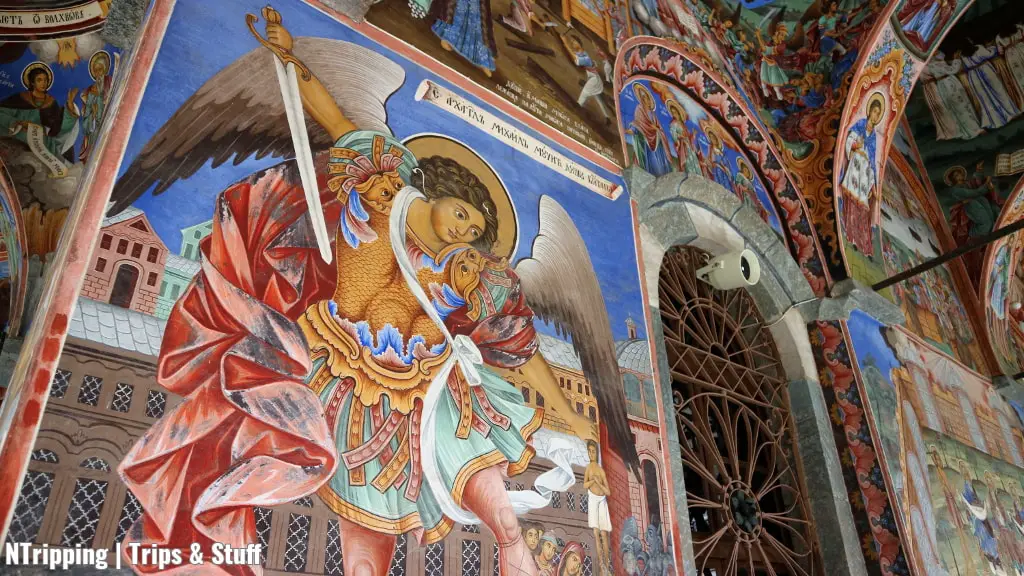
The most distinguishable feature of the church is the stunning frescoes.
The most prominent Bulgarian hagiographers of the 19th century – Zahari Zograf, Dimitar Zograf, and Stanislav Dospevski – painted their masterpieces here.
Joined by other talented painters, within several years they drew elaborate biblical scenes and depictions of the lives of saints and martyrs. Their art covered the church interior walls, the domes, the façades under the arcade, and the ceilings under the domes.
On top of that, they painted 40 huge icons for the iconostases and countless smaller ones.
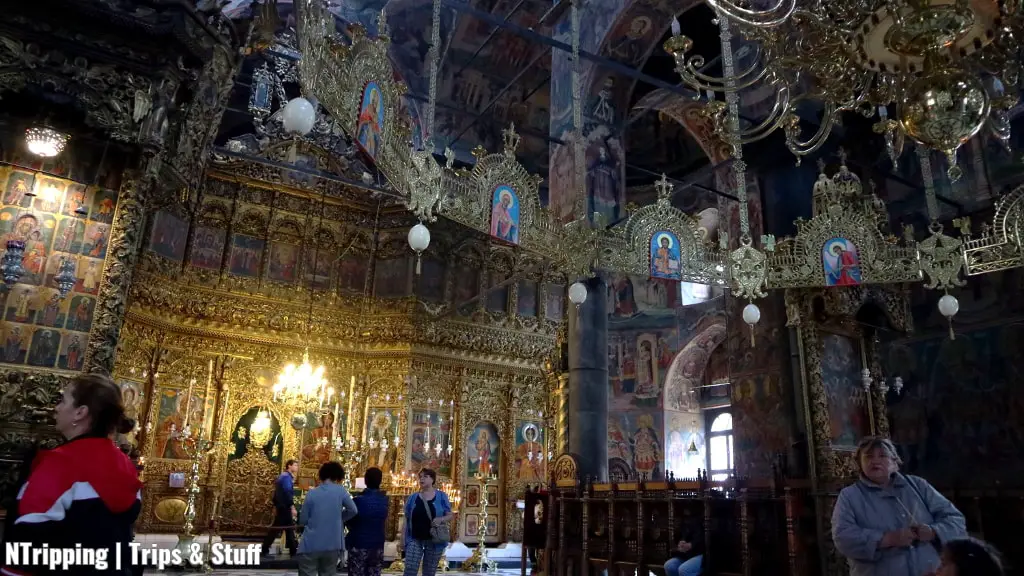
Skilled woodcarvers under the supervision of Atanas Teladour created the central iconostasis. After three years of hard work under the talented hands of the carvers, came to life a masterpiece iconostasis.
Its size and composition are unrivaled in the Balkans.
The carvings resemble three-dimensional sculptures rather than the typical carvings you can see in other churches. The vibrant colors complement the richness of the interior.
At the dim light of the candles and the sun rays coming from the windows, you can see the glitter on the golden-painted wood.
2. Climb the Ancient Hrelyo Tower for Jaw-Dropping Vistas
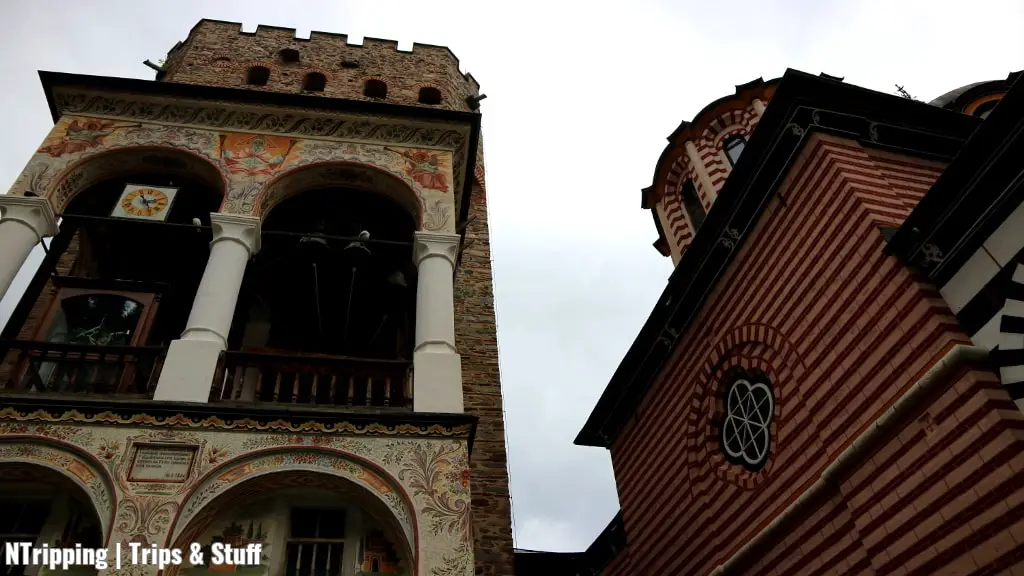
In 1335, the local governor Hrelyo helped construct the monastery’s tower. Today, the defensive structure is the oldest surviving building in the monastery.
Later named after the governor, the 23 m / 75 ft. high construction served as both a residential and defensive structure. The top floor of the tower hosts a small chapel with magnificent frescoes.
Climbing the steep, narrow, and winding stairs is a challenging exercise.
However, the rewarding views of the Rila Monastery’s arcades, the roofs of the church’s domes, and the peaks of the Rila Mountain in the background are as breathtaking as the steps.
3. Discover the Incredible Treasures of the History Museum
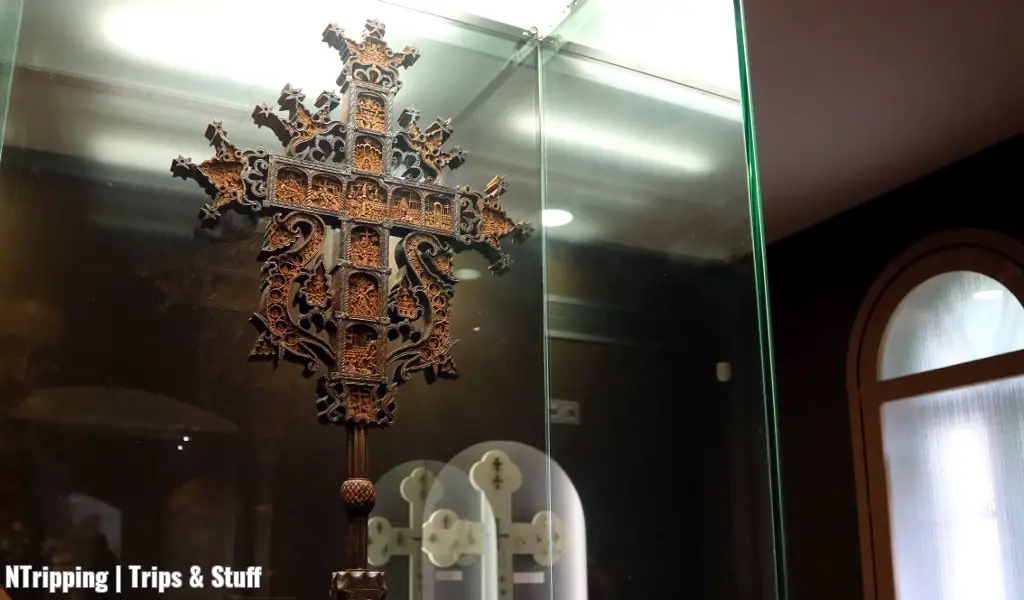
The Rila Monastery History Museum boasts an extremely rich collection.
The items trace the evolution of the monastery and show its cultural, educational, and spiritual importance through the centuries.
On display, you can see numerous books, chalices, crosses, icons, certificates, as well as gifts from political and religious leaders and pilgrims.
The printing press, which was brought to the Rila Monastery from Vienna in the 1860s, served to extend the monastery’s popularity and importance.
The monks were unable to keep up with the increased demand for hand-printed images of St. Ivan of Rila and scenes of his life. They acquired the printing press and started producing a greater number of religious copies.
You can see the copper printing plates and the images on display alongside the press.
Other magnificent items on display feature:
- The original wooden door of the Hrelyo Tower.
- Certificates from the sultans, confirming the independence of the monastery.
- Icons from the 14th and 15th centuries.
Despite the countless treasures the museum holds, the highlight of the collection is Rafael’s cross.
Named after the monk who carved it, the masterpiece is 80 cm / 31.5 in high and 42 cm / 16.5 in. wide. 600 figures, grouped in 36 biblical scenes cover every millimetre of the wooden masterpiece.
You would need hours to appreciate the elaborate work, which took the monk 12 years to complete and cost him his eyesight.
4. Visit the Lavish Guestrooms and the Ethnographic Museum

Visiting the Ethnographic Museum and the guestrooms in Rila Monastery provides an invaluable snapshot of the life of wealthy merchants from the 18th and 19th centuries.
The Ethnographic Museum’s exposition displays national costumes and jewelry from this period.
In this age, merchants from several Bulgarian settlements built their own accommodations in the monastery. They used the chambers during their visits. The merchants furnished and maintained the guest rooms in the spirit of their native towns.
Nowadays, you can see the well-preserved Koprivshtitsa, Teteven, Chirpan, Kyustendil, and Gabrovo guest quarters. Authentic furniture, as well as decorative, woodcarving ornamentations, adorn the spaces.
✔️ Tip: Visiting the guestrooms and the Ethnographic Museum is the only way to walk the terraces of the Rila Monastery.
5. Admire the Gigantic Monastery Kitchen
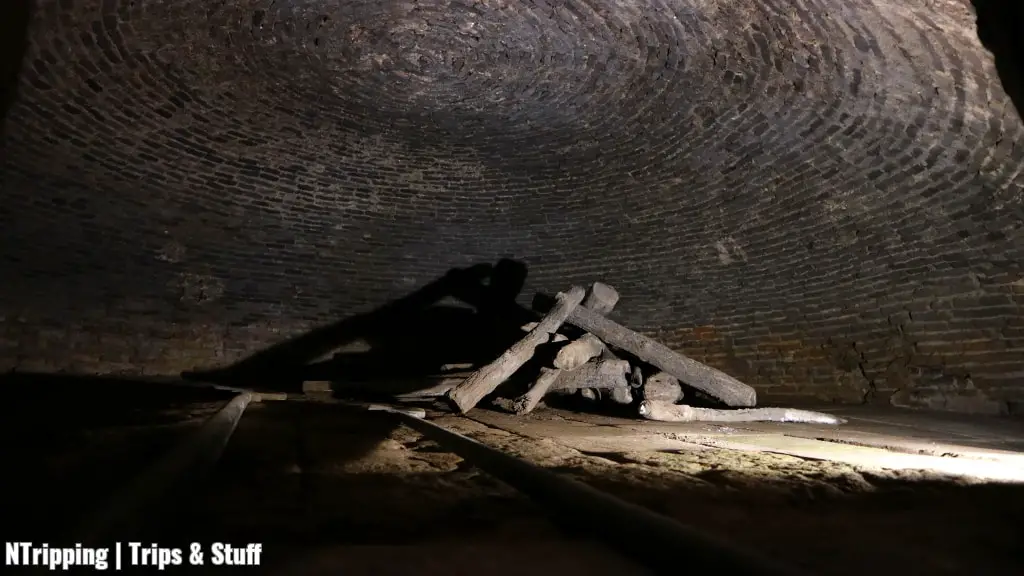
The monastery’s kitchen is a rather impressive architectural achievement. Through the centuries, it has fed countless pilgrims and welcomed many guests.
The 25 m / 82 ft. high chimney is constructed in such a way that the smoke from the gigantic room can escape without suffocating the cooks.
The enormous pots and spoons, as well as the oven, which might be able to accommodate a whole tourist bus, serve as a reminder of the huge number of people who were welcomed here.
6. Check Out the Magnificent Icon Gallery
At Rila Monastery’s icon gallery, you can admire a collection of 80 Orthodox icons, painted in the 18th and 19th centuries.
Also on display are 28 portraits of the monastery’s abbots. Between 1860 and 2005, the head of the monastery changed often, but since then, the elected abbot has remained the same.
7. Savor Traditional Bulgarian Snacks from the Legendary Bakery
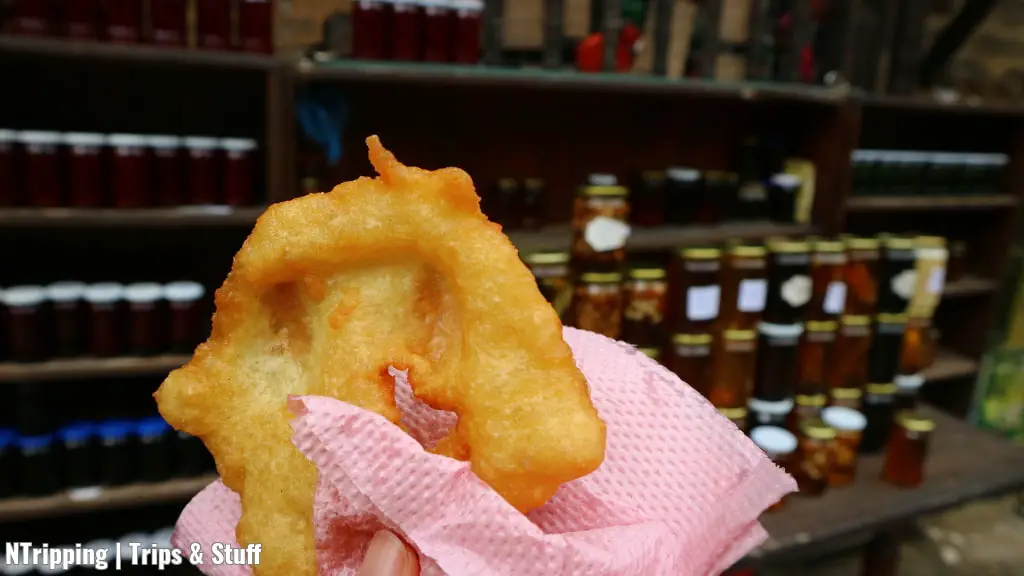
The monastery kitchen is no longer operational but just outside the monastery walls, you’ll find the bakery. It was established in 1866.
Don’t leave Rila Monastery without trying the legendary traditional Bulgarian snack, called mekitsi.
The deep-fried dough is crunchy and melts in your mouth. It’s a great source of much-needed calories after an exhausting visit to the largest Bulgarian monastery.
From the bakery, you can also stock on freshly baked bread and buffalo yogurt produced in the nearby Rila town.
Things to Do and See on the Way to Rila Monastery
On the way to Rila Monastery, you’ll pass through quaint villages. Let’s see what you shouldn’t miss doing in the region.
Visit the Stob Pyramids
The majestic sandstone creations of nature are worth a separate visit. Located near the village Stob, they rise 12 m / 39 ft. high and can be spotted from the road.
However, be careful in case it rains. The ground around the pyramids becomes extremely slippery and it’s dangerous to climb to the Stob Pyramids.
Stop at Orlitsa Nunnery
Before you reach Rila Monastery, you can pay a visit to Orlitsa Nunnery.
In the last five centuries, countless pilgrims have stopped here on their way to the Rila Monastery.
The St. Peter and Paul Church of the nunnery was built in 1469. Inside are kept the relics of St. Ivan Rilski.
Eat Bulgarian Delicacies at the Local Restaurants
The restaurants along the way to Rila Monastery, and in the two little towns you’ll pass, offer freshly prepared Bulgarian dishes.
The fresh trout – grilled or fried – is to die for. Traditional Bulgarian dishes are served in clay pots while scrumptious salads compliment your lunch and tease your palate.
Try the Organic Honey
Buy a few jars of the sweet nectar of the gods.
The producers sell it directly in front of their houses. You can see the colorful beehives in their gardens and taste their healthy product before deciding which one to buy.
Buy Typical Bulgarian Clay Pots
Another colorful sight by the edge of the road is the piles of traditional clay pots.
They are not just great travel souvenirs but also indispensable in the kitchen.
Travel Tips for Your Day Trip from Sofia to Rila Monastery
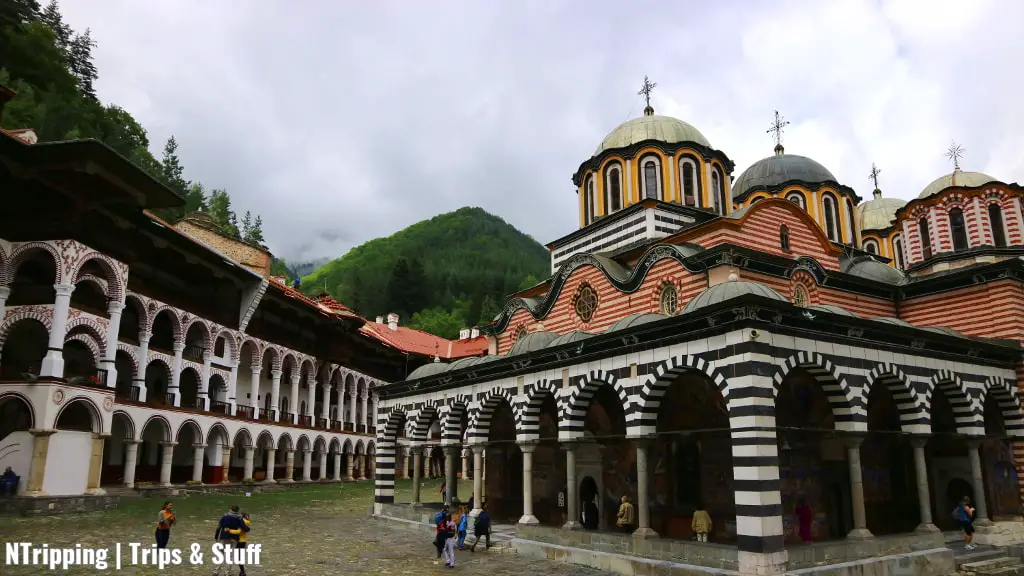
Below, you’ll find the nitty-gritty details about your day trip from Sofia to Rila Monastery.
Opening Hours of the Monastery
The museum, the icon gallery, the tower, and the kitchen are open as follows:
- Between 8:30 AM and 7:30 PM (June 1st until September 30th).
- Between 8:30 AM and 4:30 PM (October 1st until May 31st).
Since Rila Monastery is an active place of worship, here is also the schedule of the services:
- Work days: 6:30 AM and 5:00 PM.
- Sundays and holidays: 8:00 AM and 5:00 PM.
The service is held in the main church, except during the winter months. The monastery chapel Nativity of the Christ at the monastery bookshop hosts the worshipers in winter.
Entrance Tickets
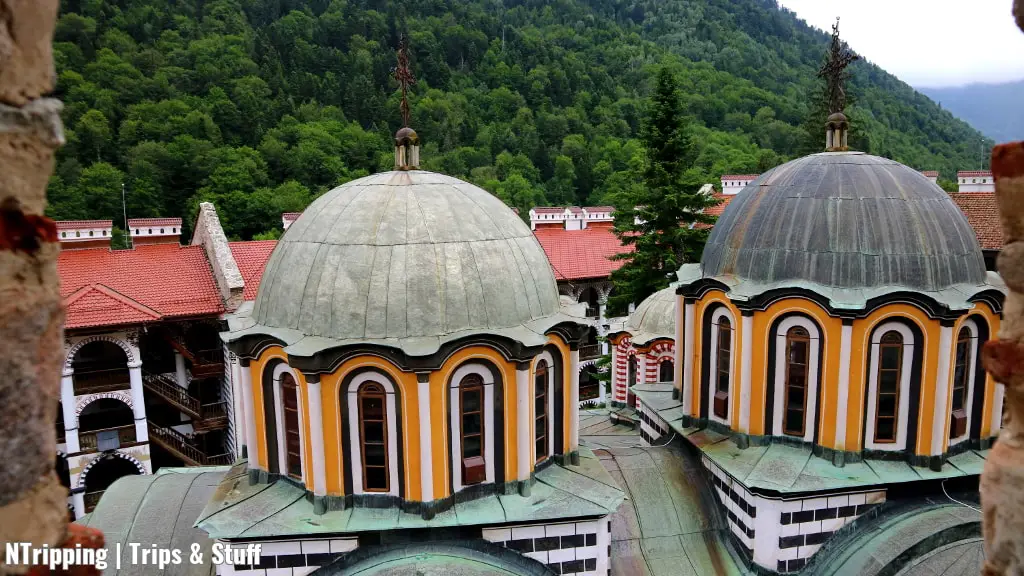
Here’s all the ticket information you need:
- Visit Rila Monastery’s courtyard and the Church of the Nativity of the Virgin Mary is free.
- The tickets for the Hrelyo Tower, the History Museum, the Icon Gallery, and the kitchen are 5.00 BGN (~$2.75) each for adults.
- The reduced ticket fee for students and senior citizens is 2.00 BGN (~$1.10).
- You can buy separate tickets or a combo ticket for all attractions from the History Museum’s ticket office.
Where to Stay at Rila Monastery
If visiting Rila Monastery on a day trip from Sofia won’t satisfy your curiosity, you can spend a night here as well.
The monastery provides a few basic rooms for travelers.
For reservations, you can call the monastery at (+359) 89 687 2010, Monday to Friday, 10 AM – 7 PM.
In the area, you’ll find further accommodation options.
Where to Eat at Rila Monastery
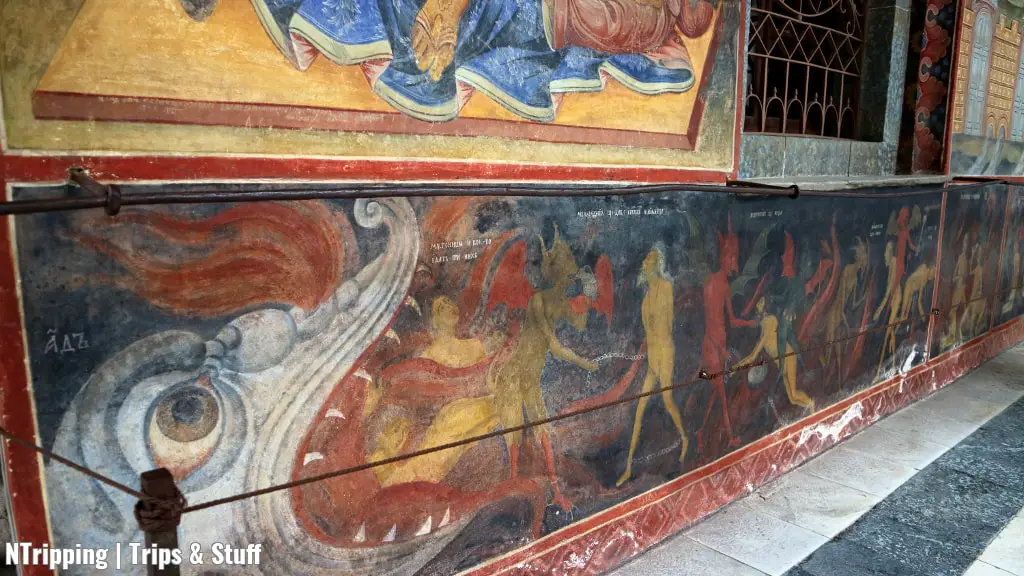
Eating and smoking within the monastery walls are forbidden.
Several fountains in and around the Rila Monastery will satisfy your thirst with clear, refreshing mountain water.
Outside Rila Monastery’s walls, you’ll find the historic bakery, established in 1866. Next, two restaurants with questionable reputations will serve you food. A snack shop is also available.
My recommendation is to try the traditional mekitsi from the bakery and eat your lunch at one of the restaurants along the way.
For example, Restaurant Gorhim at the entrance of Pastra is an excellent choice. The cozy interior, the friendly staff, and the scrumptious Bulgarian food and wine on the menu will satisfy even the most ostentatious traveler.
Frequently Asked Questions About Visiting Rila Monastery
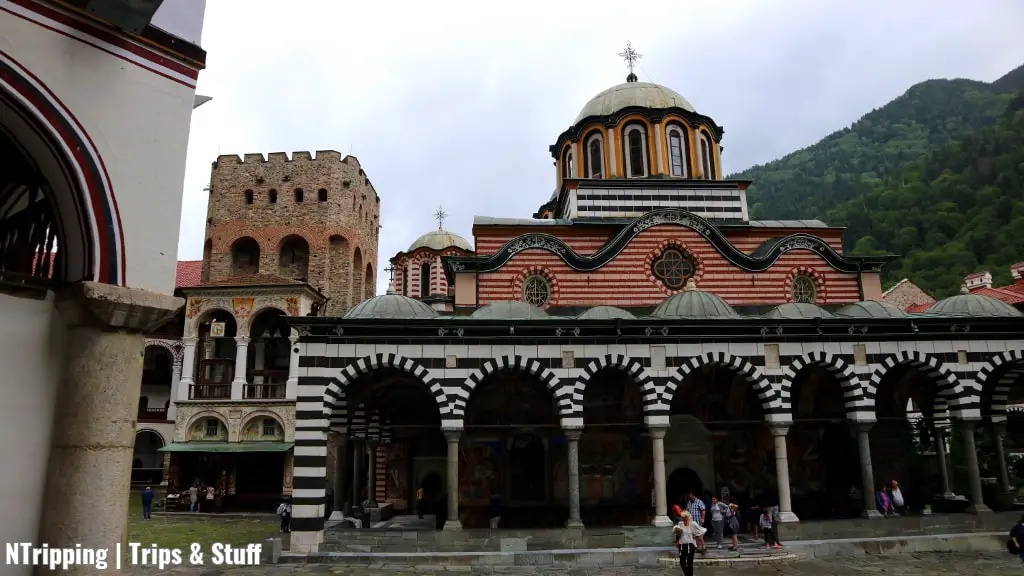
Is Rila Monastery Worth Visiting?
Rila Monastery is definitely worth visiting for its captivating history, incredible architecture, jaw-dropping frescoes, and stunning location in the heart of Rila Mountain. Don’t miss exploring the church for the masterpiece murals, the History Museum for the priceless treasures, and Hrelyo’s Tower for the breathtaking views.
Can You Sleep in Rila Monastery?
Yes, you can. Rila Monastery has a few basic rooms for travelers. To book, you can call the monastery at (+359) 89 687 2010, Monday to Friday, 10 AM – 7 PM.
You’ll find further accommodation options in the area.
Do Monks Live in Rila Monastery?
Yes, around 60 monks currently live inside Rila Monastery. Keep in mind that Bulgaria’s holiest religious site serves as an active place of worship.
What Is the Dress Code for Rila Monastery?
When visiting an active place of worship like Rila Monastery, it’s appropriate to cover your knees and shoulders. Additionally, take your hat or cap off when entering the church.
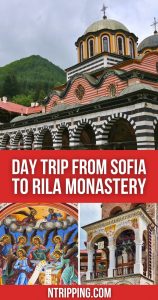
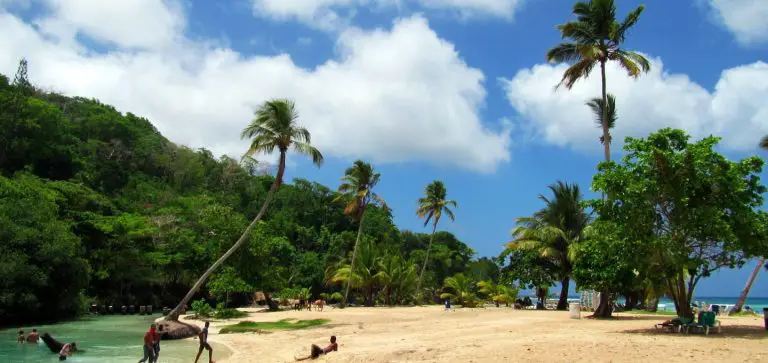
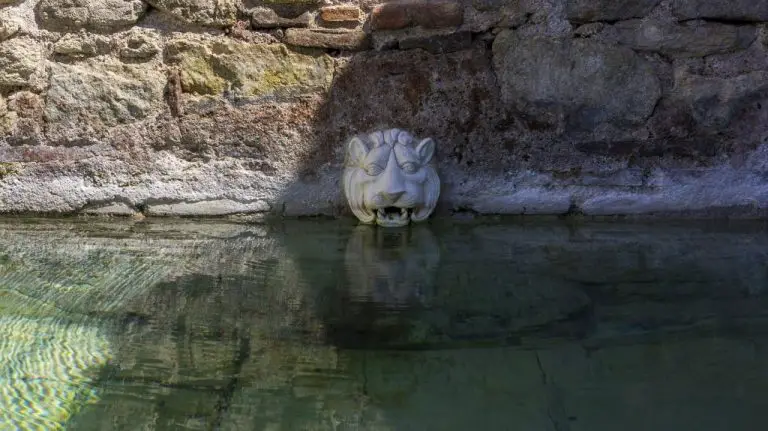
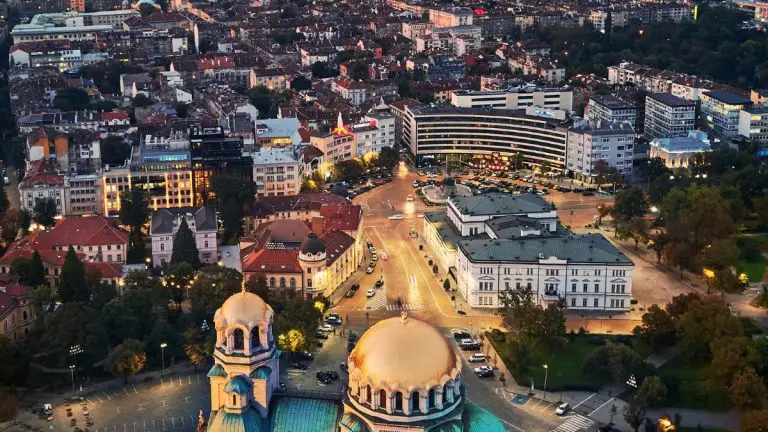



I love the natural surroundings and the history of this monastery, and those are such stunning frescoes!
Yes, everything about the Rila Monastery is amazing! You should definitely visit, Dee, and check the incredible energy and atmosphere of the place :)